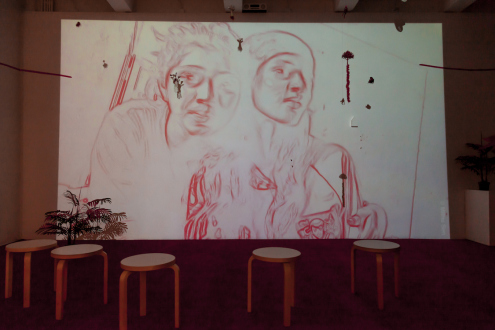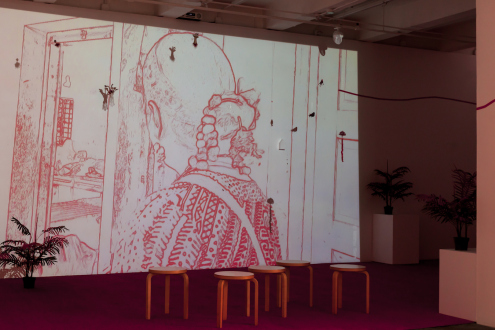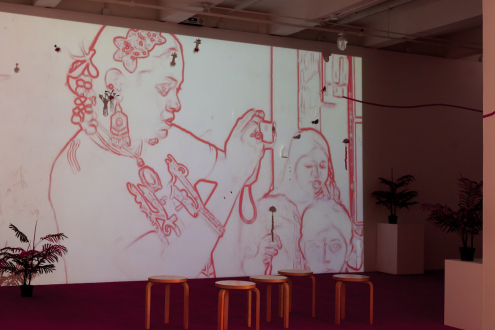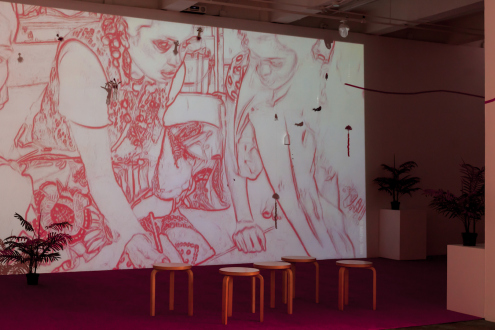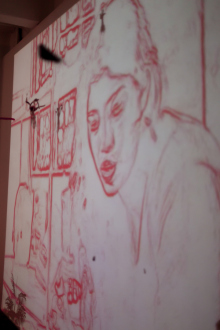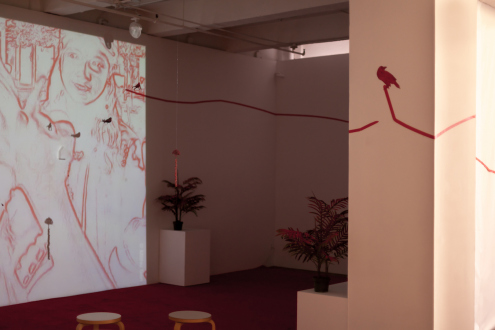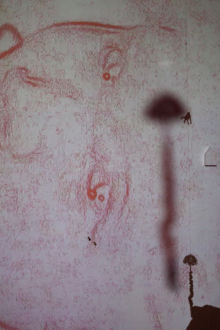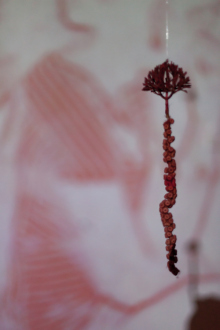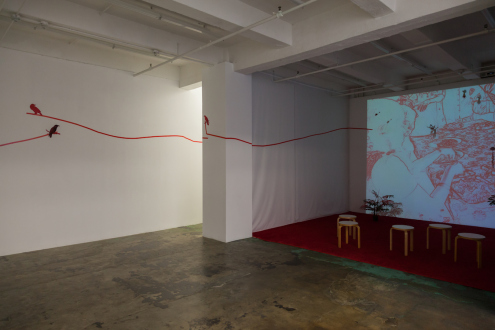Mithu Sen – I have only one language; it is not mine (Works)
Selected Works
Mithu Sen
Mithu Sen – I have only one language; it is not mine Press Release
Thomas Erben is pleased to present multi-media artist Mithu Sen’s video installation I have only one language; it is not mine (2014, 29 min). This is a project in collaboration with Chemould Prescott Road, Mumbai.
I have only one language; it is not mine will convert a portion of the gallery into a lushly immersive, potent installation incorporating video, red-colored carpeting, tropical plants, drawings, and mixed-media sculptural objects previously used in performances by the artist. Installed in the path of the video projection and animated by a fan, these elements cast lively shadows, adding to the video’s vibrant visual language.
Commissioned for the 2014 Kochi-Muziris Biennale, the installation wades into what Sen has called “a fantasy film on a reality set… an experience of intimacy and trust, producing physical and emotional behavior, making all involved believe in an alternative world.”
A focal point of the exhibition, Sen’s video makes use of a fictional character the artist developed prior to her visit to a government orphanage for young girls in Kerala, India—many of them victims of emotional and sexual abuse. Conceiving of a way to freely interact with the children, Sen developed Mago, a character she has described as “a seemingly homeless person who speaks her own language.” Mago is playful and anarchic—a sneaky challenge generating channels of communication beyond language and its associations with trauma, institutionalization, and hierarchy.
Neither Sen understood the girls’ language, Malayalam, nor did the girls understand Mago’s non-language, resulting in an experience built purely on human interaction and mutual empathy. Sen inhabited Mago over three days in an unscripted performance that in many ways shared the role of guest, host, child, and adult with the girls, putting into practice the artist’s commitment to “radical hospitality”, “lingual anarchy”, and “guest-host-hospitality-tolerance” practice.
Seeking to establish a situation of trust, the performance was documented by Sen herself, wearing a set of recording devices around her neck. The visual language of the video is thus shaky and sometimes out of focus, a quality that is emphasized in passages of the videos when the girls assumed authorship, playfully taking the camera and turning it back on Mago.
I have only one language; it is not mine carefully balances on the border of intimacy and distance, inside and outside, one’s self and not one’s self. This sense of invitation, extension, and changeability is echoed in the video’s presentation, which is enriched by a red line drawn by the artist around the gallery, outside the projection area. Further still, the video is digitally manipulated with a red-hued, high-contrast effect, resulting in an imagery that resembles animated drawings. This effect ensures the girls’ anonymity while also invoking the very elements of Sen’s main medium: LIFE.
Seeking a dialogue outside the narrow alleys of comprehension, Sen/Mago and the children transform a reality of trauma and neglect into a space of possibility and hope.
